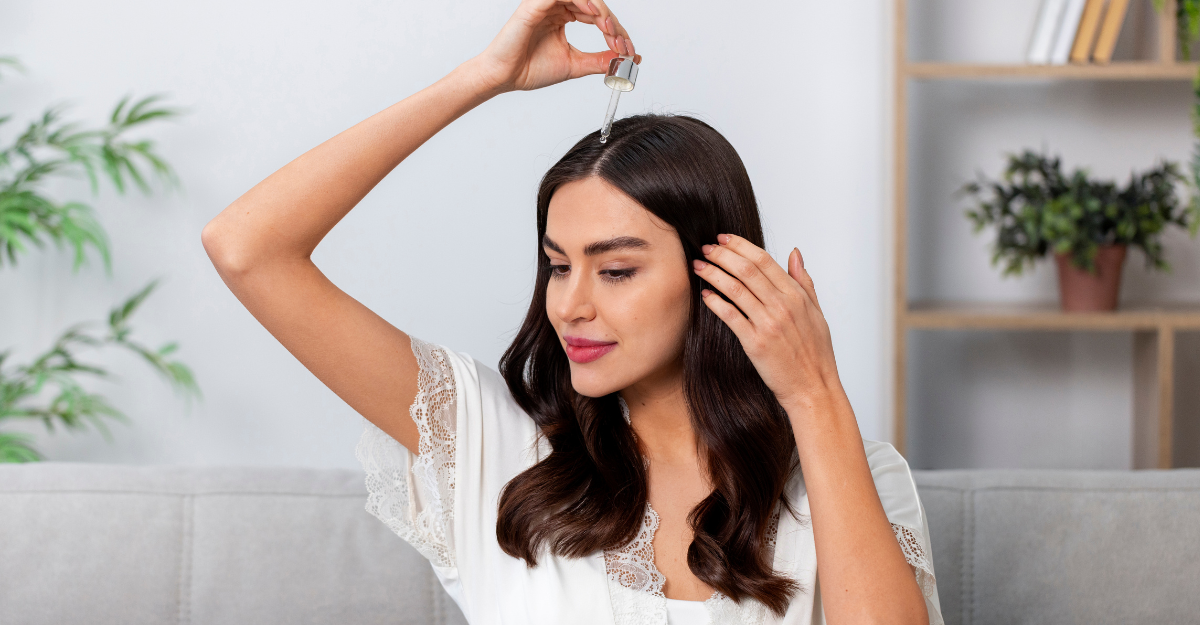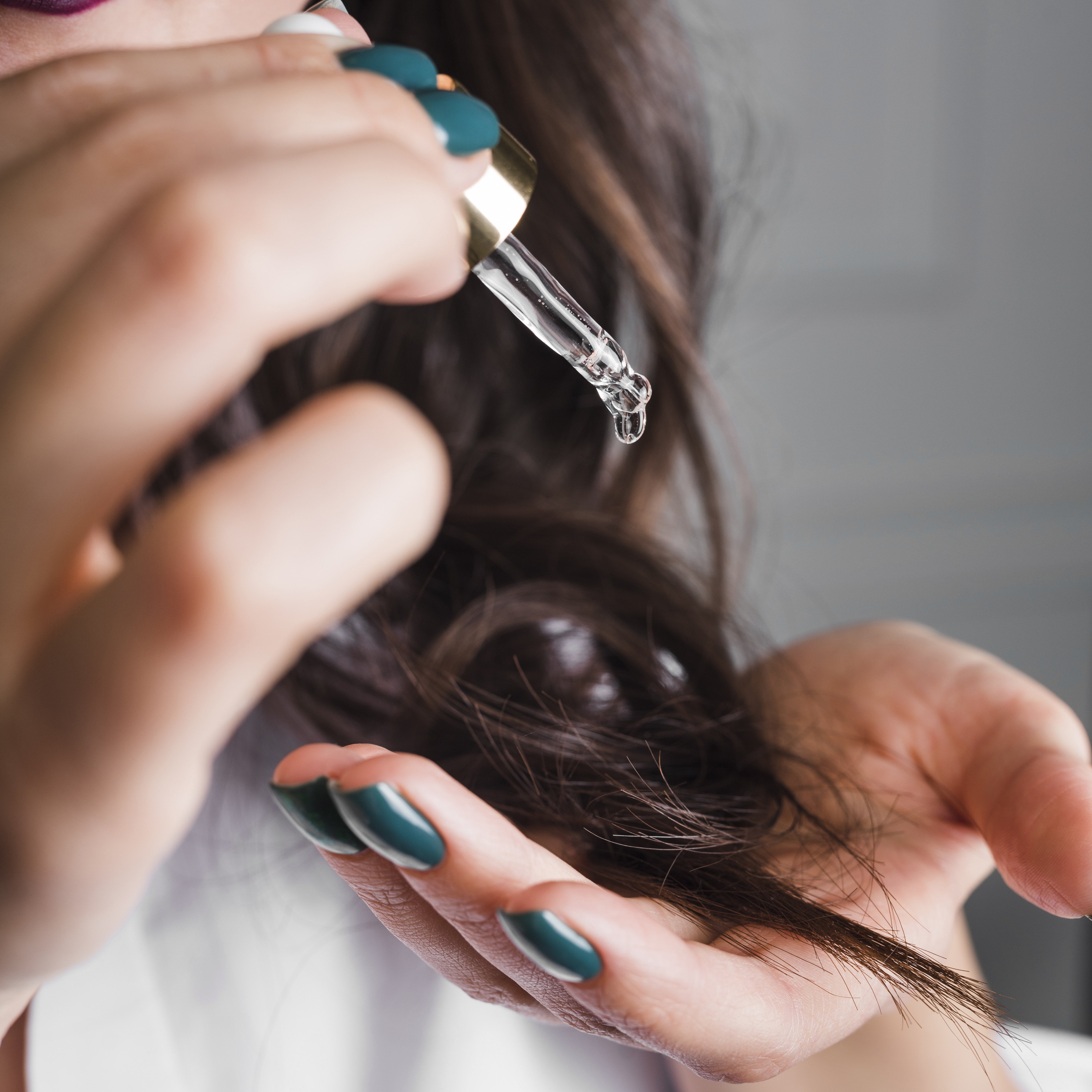
In the ever-evolving world of hair wellness, new 'growth factor' serums and trendy treatments pop up weekly. Yet, amidst the noise, one topical solution remains the undisputed, clinically proven champion for hair loss: Minoxidil. Originally an accidental discovery, this powerful medication is now the go-to antidote for achieving denser, healthier-looking hair.
We break down the science, the benefits, and the essential usage rules with insights from leading dermatologists, Dr Navjot Arora. Consultant Dermatologist at Dermaheal Skin Clinic, Dwarka, and Dr Ruben Bhasin Passi, Consultant, Dermatology at CK Birla Hospital.
Minoxidil is a topical medication widely used to treat hair thinning and hair loss. Dr Passi notes that it was originally developed as an oral medicine for high blood pressure but was serendipitously found to stimulate hair growth as a side effect.
Today, Minoxidil is applied directly to the scalp in liquid or foam form, typically available in 2%, 5%, and 10% strengths. Dr Arora explains its mechanism: "Minoxidil works by widening blood vessels in the scalp, which improves blood flow and nutrient delivery to hair follicles." This action helps prolong the vital growth phase of the hair cycle, resulting in hair that is thicker and stronger over time.

The primary appeal of Minoxidil lies in its proven ability to slow down hair loss and promote noticeable new hair growth in both men and women.
It can be particularly effective in cases of androgenetic alopecia (male or female pattern baldness), helping to stabilise thinning. Consistent use helps strengthen weak or miniaturised hair follicles, encouraging baby hair to mature into thicker, denser strands over time.
Dr Arora highlights that regular application helps maintain existing hair for a longer period, preventing current follicles from shrinking further. It also helps with hereditary baldness, post-pregnancy hair loss, and hair thinning due to stress or hormonal changes.
Dr Arora emphasises that Minoxidil remains the "gold standard in long-term studies," cautioning users against prematurely switching to trendy alternatives. "People who discontinue Minoxidil to try these alternative serums often experience more hair loss over time," he warns.
To achieve those coveted results, the application technique—and, more importantly, consistency—is non-negotiable.
Dr Passi advises applying Minoxidil to a clean, dry scalp, usually once or twice a day as directed by your dermatologist (Men typically use 1 ml or half a capful of foam twice daily; women use 1 ml once or twice daily).
A small dosage should be gently massaged directly into the affected areas. It is crucial to let the solution dry completely before sleeping or using other products, waiting at least four hours before washing hair.
Consistency is key—results typically appear after three to six months of regular use. Using more than the prescribed amount will not accelerate results. Dr Arora cautions that many users are tempted to replace Minoxidil with trendy hair serums marketed as “growth factor boosters,” but without medical advice, such changes can reduce treatment effectiveness and lead to unnecessary expenses.
Don't miss: How To Achieve Volume And Thickness For Fine Hair? Expert Shares Insight
While Minoxidil is highly effective, it is not suitable for everyone. Always consult a specialist before starting treatment.
Minoxidil should be avoided by pregnant or breastfeeding women (unless advised by a doctor), individuals with scalp infections, eczema, open wounds, or allergies to its ingredients.
People with low blood pressure or underlying heart conditions, especially if already on blood pressure medications, should consult a doctor before use, as Minoxidil can affect circulation.
It is also not recommended for anyone under 18 years old unless advised by a healthcare professional. Dr Arora warns that self-experimenting or stopping Minoxidil abruptly can worsen hair loss and undo months of progress.

Starting Minoxidil is a commitment, and knowing the process helps manage expectations. In the initial shedding phase (4–8 weeks), it is normal to experience a mild, temporary increase in hair fall—a sign that new, stronger hair growth is beginning.
“With consistent use over three to six months, hair density gradually improves, and you may start noticing baby hair. Visible results become apparent between six to twelve months. However, the hair growth is maintained only while you continue using Minoxidil,” advises Dr Passi..
Once treatment is stopped, any regrown hair may fall out again within a few months. "Mild side effects such as scalp dryness, itching, or dandruff may occur but generally subside with continued use or adjustment of the formulation," says Dr Arora.
The bottom line? Minoxidil is the tried-and-true ingredient that delivers results—but only if you stay the course.
Don't miss: From Protein To Keratin: 5 Haircare Treatments You Need To Know About
Image courtesy: Freepik
For more such stories, stay tuned to HerZindagi.
Also watch this video
Herzindagi video
Our aim is to provide accurate, safe and expert verified information through our articles and social media handles. The remedies, advice and tips mentioned here are for general information only. Please consult your expert before trying any kind of health, beauty, life hacks or astrology related tips. For any feedback or complaint, contact us at compliant_gro@jagrannewmedia.com.